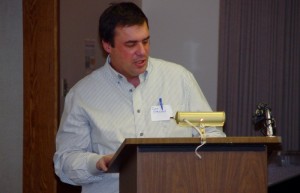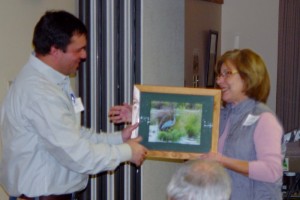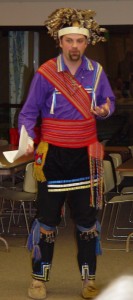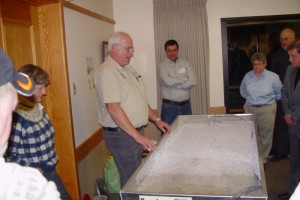Tenth Annual Meeting Held
Conewango Creek Watershed Association held its Annual Meeting at 7pm Tuesday Jan. 25th at the Jamestown Audubon Center with twenty-five people in attendance. The group began by holding a brief business and elected directors as follows: John Haffner for Cattaraugus County, John Gallagher for Chautauqua County and Elizabeth Dropp for Warren County. The group also announced that Charles Conaway will fill an unexpired term for one of the Warren County director positions.

Now former chairman of the board, Dan Steward, gave the chairman’s report. With help from a PowerPoint presentation he reviewed CCWA’s activities of this past year. Topics touched upon were the 2010 Conewango Creek Cleanup, the Capacity Building Grant, Road Inventories, and the Conewango Creek Water Trail.
An award was presented to Bryan Wilson of Kennedy for his invaluable help in preparing the Water Trail brochure.

Bryan Wilson did all the map and Geographical Information System work for the map in the brochure and produced a beautiful and very professional product. Dan Steward was also honored. As a small token of appreciation from the board of directors for his 12 years of service to CCWA, Dan was given a framed photograph of a Great Blue Heron. The photo was taken locally by photographer, Mr. Terry LeBaron, of Jamestown. LaBaron is a volunteer at the Jamestown Audubon Society.

The first speaker was Alex Watkins of Warren. Watkins began studying local history at the young age of 12 when he was a Boy Scout. He delved into the local Native American culture and history from friends on the Allegany and Tuscarawas Reservations. He touched on a number of topics including the Iroquois Federation, their interactions with the European settlers, and also their dress and lore. He was dressed in the garb of a typical Iroquois man of the eighteenth century.

Our second speaker was David Wilson of the Chautauqua County Soil and Water Conservation District. David demonstrated a stream table. A stream table is a model that demonstrations how streams change over time and how man’s activities affect the streams themselves and our neighbors. Dave demonstrated that streams are almost “alive” in that they are constantly changing and react to changes in conditions including manmade changes, such as gravel bar removal and channelizing. The demonstration was very effective. The stream table was provided by Seneca Trails Resource Conservation & Development Council.
